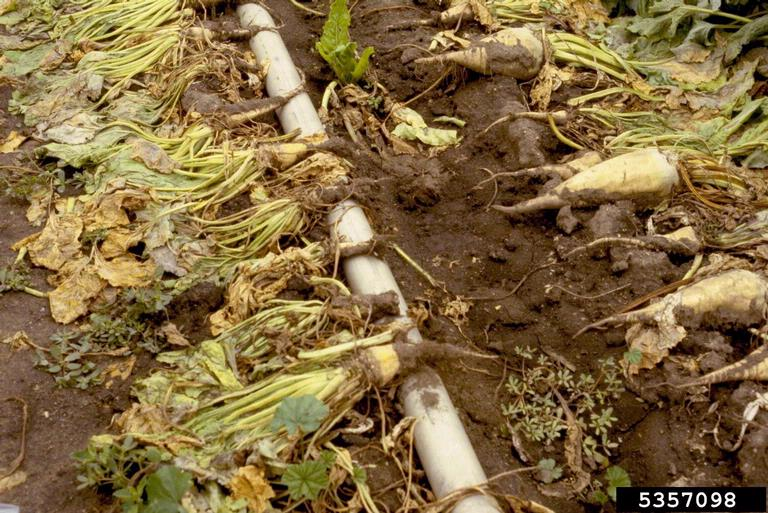|
Plasmodiophorid
The plasmodiophores (also known as plasmophorids or plasmodiophorids) are a group of obligate endoparasitic protists belonging to the subphylum Endomyxa in Cercozoa. Taxonomically, they are united under a single family Plasmodiophoridae, order Plasmodiophorida, sister to the phagomyxids. Ecology and pathology Plasmodiophores are pathogenic for a wide range of organisms, but mainly green plants. The more commonly recognized are agents of plant diseases such as clubroot, powdery scab and crook root of watercress, or vectors for viruses that infect beets, peanut, monocots and potatoes, such as the potato mop-top virus or the beet necrotic yellow vein virus. Taxonomy History The plasmodiophores have historically been regarded as Fungi. The first description of plasmodiophores as a taxonomic group was in 1885 by Zopf, who united two genera '' Plasmodiophora'' and '' Tetramyxa'' in a common family “Plasmodiophoreæ”, inside the group “Monadineæ”, as part of the division ... [...More Info...] [...Related Items...] OR: [Wikipedia] [Google] [Baidu] [Amazon] |
Protists
A protist ( ) or protoctist is any Eukaryote, eukaryotic organism that is not an animal, Embryophyte, land plant, or fungus. Protists do not form a Clade, natural group, or clade, but are a Paraphyly, paraphyletic grouping of all descendants of the last eukaryotic common ancestor excluding land plants, animals, and fungi. Protists were historically regarded as a separate taxonomic rank, taxonomic kingdom (biology), kingdom known as Protista or Protoctista. With the advent of phylogenetic analysis and electron microscopy studies, the use of Protista as a formal taxon was gradually abandoned. In modern classifications, protists are spread across several eukaryotic clades called supergroup (biology), supergroups, such as Archaeplastida (photoautotrophs that includes land plants), SAR supergroup, SAR, Obazoa (which includes fungi and animals), Amoebozoa and "Excavata". Protists represent an extremely large genetic diversity, genetic and ecological diversity in all environments, in ... [...More Info...] [...Related Items...] OR: [Wikipedia] [Google] [Baidu] [Amazon] |
Ligniera
''Ligniera'' is a protist genus of the family Plasmodiophoraceae. The genus name of ''Ligniera'' is in honour of Élie Antoine Octave Lignier (1855–1916), who was a French botanist, known for his work in the field of paleobotany. References Further reading * * * * * * * * Endomyxa Rhizaria genera {{Cercozoa-stub ... [...More Info...] [...Related Items...] OR: [Wikipedia] [Google] [Baidu] [Amazon] |
Fungi
A fungus (: fungi , , , or ; or funguses) is any member of the group of eukaryotic organisms that includes microorganisms such as yeasts and mold (fungus), molds, as well as the more familiar mushrooms. These organisms are classified as one of the kingdom (biology)#Six kingdoms (1998), traditional eukaryotic kingdoms, along with Animalia, Plantae, and either Protista or Protozoa and Chromista. A characteristic that places fungi in a different kingdom from plants, bacteria, and some protists is chitin in their cell walls. Fungi, like animals, are heterotrophs; they acquire their food by absorbing dissolved molecules, typically by secreting digestive enzymes into their environment. Fungi do not photosynthesize. Growth is their means of motility, mobility, except for spores (a few of which are flagellated), which may travel through the air or water. Fungi are the principal decomposers in ecological systems. These and other differences place fungi in a single group of related o ... [...More Info...] [...Related Items...] OR: [Wikipedia] [Google] [Baidu] [Amazon] |
Beet Necrotic Yellow Vein Virus
Beet necrotic yellow vein virus (BNYVV) is a plant virus, transmitted by the plasmodiophorid '' Polymyxa betae.'' The BNYVV is a member of the genus '' Benyvirus'' and is responsible for rhizomania, a disease of sugar beet (Rhizo: root; Mania: madness) that causes proliferation of thin rootlets, and leads to a smaller tap root with reduced sugar content. Infected plants are less able to take up water, and wilting can be observed during the warm period of the year. If the infection spreads to the whole plant, vein yellowing, necrosis and yellow spots appear on the leaves, giving the virus its name. Hosts and symptoms BNYVV Infects all of the following species: ''Beta vulgaris'' (beetroot), ''Beta vulgaris var. cicla'', ''Beta vulgaris var. rubra'', ''Beta vulgaris var. saccharifera'' (sugarbeet), ''Chamomilla recutita'' (common chamomile), ''Chenopodium'' (Goosefoot), ''Chenopodium quinoa'' (quinoa), ''Cichorium intybus'' (chicory), ''Cirsium arvense'' (creeping thistle), ''Con ... [...More Info...] [...Related Items...] OR: [Wikipedia] [Google] [Baidu] [Amazon] |
Powdery Scab
Powdery scab is a disease of potato tubers. It is caused by the cercozoan ''Spongospora subterranea'' f. sp. ''subterranea'' and is widespread in potato growing countries. Symptoms of powdery scab include small lesions in the early stages of the disease, progressing to raised pustules containing a powdery mass. These can eventually rupture within the tuber periderm.Maldonado, M. Loreto Hernandez, Richard E. Falloon, Ruth C. Butler, Anthony J. Conner, and Simon R. Bulman. "''Resistance to Spongospora Subterranea Induced in Potato by the Elicitor β-aminobutyric Acid.''" Australasian Plant Pathol. Australasian Plant Pathology 44.4 (2015): 445-53. Web. 21 Oct. 2015. The powdery pustules contain resting spores that release anisokont zoospores (asexual spore with two unequal length flagella) to infect the root hairs of potatoes or tomatoes. Powdery scab is a cosmetic defect on tubers, which can result in the rejection of these potatoes. Potatoes which have been infected can be peeled ... [...More Info...] [...Related Items...] OR: [Wikipedia] [Google] [Baidu] [Amazon] |



